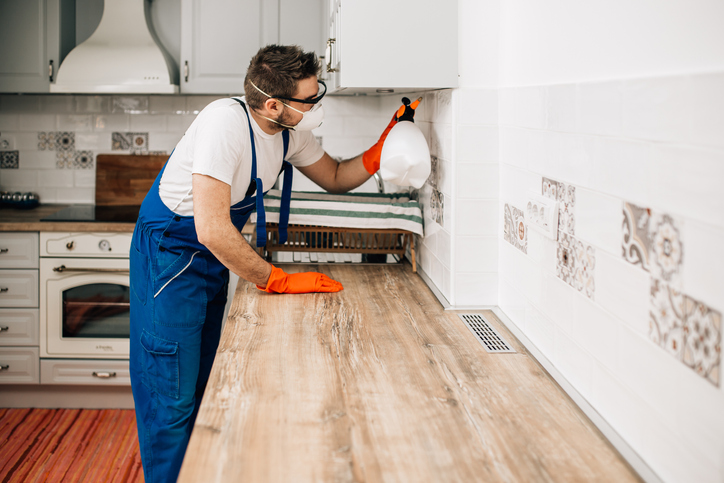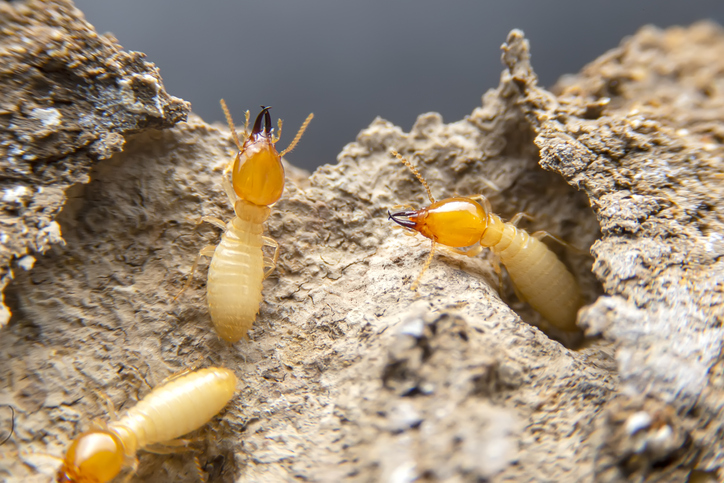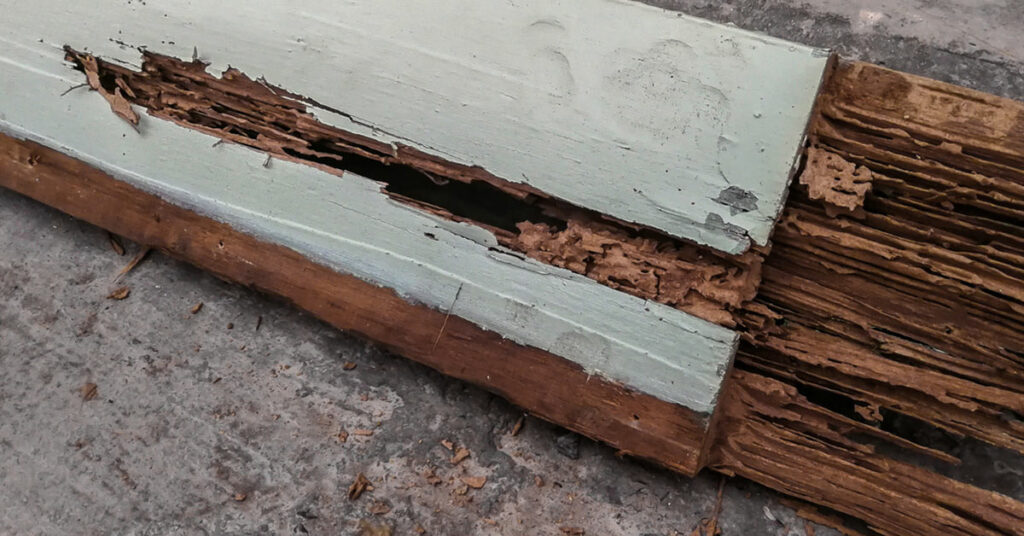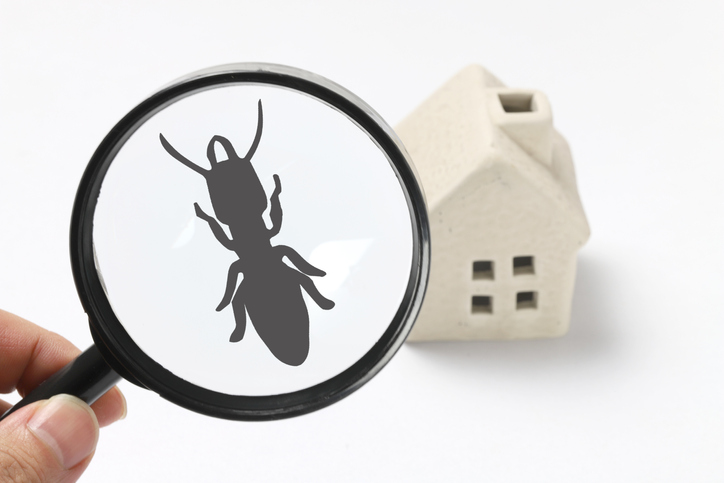Termite control plays a crucial role in protecting structures from the devastating impact of these wood-destroying pests. Termites can silently wreak havoc on buildings, causing structural damage that compromises their integrity. Without effective control measures, infestations can escalate rapidly, leading to significant repair costs and potential safety hazards.

Implementing preventive measures and adopting timely treatment strategies are paramount in mitigating the risks posed by termites. Property owners can effectively combat termite infestations when using a combination of methods such as chemical treatments, bait systems, wood treatment, and physical barriers. Regular inspections are essential for early detection, enabling swift action to minimize the damage caused by these voracious insects.
Homeowners and property managers can proactively safeguard their investments by understanding the best practices and available treatment options for termite control. Taking preventative measures and staying vigilant can help ensure the long-term integrity and value of structures, providing peace of mind and protection against the relentless threat of termites.
Understanding Termite Control
Termite control is a critical aspect of property maintenance aimed at preventing and managing termite infestations. Its primary objective is to protect structures from the destructive actions of certain insects. Property owners can mitigate the risks associated with termite damage by simply implementing effective control measures.
Early detection is crucial in termite control. Detecting the presence of termites as early as possible allows for prompt action, minimizing the extent of damage they can cause. Regular inspections by professionals or vigilant homeowners can help identify signs of infestation, such as mud tubes, discarded wings, or damaged wood.
Once termites are detected, swift action must be taken to address the infestation. Various treatment methods, including chemical treatments, bait systems, wood treatments, and physical barriers, can be employed depending on the severity and specific circumstances of the infestation. It is important to understand the principles of termite control and to act promptly in order for property owners to effectively protect their structures and minimize the potential financial and structural consequences of termite damage.
-
Best OverallSave $50 on your first recurring service today with code GET50
-
Best for TermitesSave $50 on pest control services with code SAVE50 at checkout
-
Best for Bed BugsGet a free estimate on pest control services for your home
-
Best for Wildlife RemovalCall For A Fast & FREE Phone Estimate Today
-
Best for Natural TreatmentGet $100 Off Your Termite Treatment Service
Preventive Measures for Termite Control
When it comes to termite prevention there are several things to be aware of including construction materials and moisture control.
Construction Techniques and Materials
When it comes to termite prevention, choosing the right building materials and employing appropriate construction practices is crucial. Opting for termite-resistant materials, such as concrete, steel, or pressure-treated wood, can significantly reduce the risk of termite infestation. These materials are less susceptible to termite damage, providing an added layer of protection for structures.
In addition to materials, construction techniques can play a role in termite prevention. For example, creating physical barriers during construction can deter termites from accessing the building. Installing stainless steel mesh or using sand barriers around the foundation can create obstacles for termites, restricting their entry points.
Moisture Control
Moisture is a key factor that attracts termites to a property. Addressing moisture issues is essential in termite prevention. Proper ventilation is crucial in areas prone to humidity, as it helps keep moisture levels in check. Good airflow helps to prevent dampness and reduces the appeal of a structure to termites.
Furthermore, addressing leaks promptly is essential. Termites are attracted to moisture-rich environments, and even minor leaks can provide them with the necessary moisture source. Regular inspection and maintenance of plumbing systems, gutters, and downspouts are vital to minimize moisture accumulation. Improving drainage around the property, ensuring proper slope and efficient water flow away from the structure, can also discourage termite activity.
By using termite-resistant materials and implementing effective moisture control measures, property owners can significantly reduce the likelihood of termite infestations and protect their structures from potential damage.
Termite Control Methods
There are various methods to protect your home and property from the damaging effects of termites. Some notable methods include chemical treatments, bait systems, wood treatments, as well as various natural and eco-friendly options.
Chemical Treatments
Chemical treatments are highly effective methods for controlling termite infestations. They involve the application of specific termiticides that create barriers to prevent termites from entering structures or eliminate existing colonies. Among the various termiticides available, some prominent brands and products have demonstrated exceptional efficacy in termite control.
One such termiticide is Termidor®, a well-known product recognized for its long-lasting barrier against termites. Its non-repellent formulation ensures termites do not detect the chemical, leading to better control. Termidor is applied around the foundation of the structure, forming a protective zone that eradicates termites upon contact. The active ingredient, fipronil, has proven effective in eliminating entire termite colonies.
Another widely used termiticide is Premise®, which contains imidacloprid as its active ingredient. Premise disrupts the central nervous system of termites, effectively eliminating them. It offers excellent control of termites, including subterranean species, and can be used for both pre-construction and post-construction treatments.
When considering chemical treatments, it is important to consult with licensed pest control professionals who can assess the situation and recommend the most suitable termiticide and application method based on the unique needs of the property and the type of termites present. The costs of chemical treatments can vary depending on factors such as the size of the infested area, the severity of the infestation, and the specific product used. It is advisable to obtain quotes from reputable pest control companies to get accurate estimates for specific circumstances.
Bait Systems
Bait systems are a popular method for termite control, offering an effective approach to eliminating termite colonies. These systems consist of bait stations strategically placed around the perimeter of a structure. The stations contain cellulose-based materials that are attractive to termites, serving as bait.
The way that termite bait stations work involves a two-step process. Initially, the stations are installed in the ground or within the structure, typically in areas where termite activity is suspected or detected. Termites discover the bait stations and begin feeding on the cellulose material inside. As they consume the bait, they unknowingly transfer the termiticide present in the bait matrix back to the colony.
The second step involves replacing the bait with termiticides. Once termite activity is confirmed within the bait stations, the bait is replaced with a termiticide-treated material. Termites continue to feed on the new bait, carrying the termiticide back to the colony. The termiticide spreads throughout the colony, affecting other termites and ultimately leading to the elimination of the colony.
Bait systems have proven to be effective in eliminating termite colonies, as they exploit the natural foraging behavior of termites. However, it is important to note that bait systems may take some time to achieve complete colony elimination, and multiple visits by pest control professionals may be required for monitoring and bait replacement.
The costs associated with bait systems can vary depending on factors such as the size of the structure, the number of bait stations required, and the extent of the termite infestation. On average, professional termite control services utilizing bait systems may range from $2,000 to $5,000, but it is advisable to obtain quotes from reputable pest control companies to get accurate estimates tailored to individual circumstances.
Bait systems offer an alternative to traditional chemical treatments, providing a targeted approach to termite control. Bait systems can effectively eliminate termite colonies and help protect structures from potential damage.
Wood Treatment
Wood treatment is an essential aspect of termite control, as termites primarily target wooden structures, furniture, and fixtures. There are two commonly used methods for wood treatment: pressure-treated wood and the application of borates.
Pressure-treated wood is created by infusing preservatives into the wood under high pressure. These preservatives, such as copper-based compounds, act as a deterrent to termites, making the wood less appealing for feeding or nesting. Pressure-treated wood is widely used in construction, particularly for areas that are vulnerable to termite infestations, such as the foundation, framing, and support structures.
Borates, specifically boric acid and its derivatives, are another effective option for wood treatment. Borates are applied as a solution or directly onto the wood surfaces. They work by poisoning the termites upon contact or ingestion, disrupting their digestive system, and ultimately leading to their demise. Borates are often used for treating wooden furniture, fixtures, and other susceptible items.
Regular inspection and treatment of wooden structures, furniture, and fixtures are essential in maintaining termite control. Inspections should focus on identifying any signs of termite activity, such as mud tubes, termite droppings (frass), or hollow-sounding wood. Prompt treatment with appropriate wood preservatives or termiticides can be crucial in preventing termite infestations and minimizing potential damage.
It is important to note that the costs associated with wood treatment can vary depending on the size and scope of the project. For pressure-treated wood, the cost is typically factored into the overall construction or renovation expenses. The cost of applying borates to existing wooden items may vary depending on the number and size of the items being treated. Consulting with professionals in the field can provide accurate estimates based on individual circumstances and the specific products used.
Using pressure-treated wood and implementing wood treatment measures with borates creates a hostile environment for termites, discouraging them from feeding on or nesting in wooden structures. Regular inspection and treatment of wooden items help maintain long-term termite control, preserving the integrity and longevity of the wood within a property.
Natural and Eco-Friendly Methods
In addition to chemical treatments and physical barriers, natural and eco-friendly methods offer alternative approaches to termite control. These methods focus on utilizing natural predators, biological control agents, and eco-friendly alternatives.
Natural Predators and Biological Control Agents
Certain natural predators can help control termite populations. For example, ants, such as the well-known ant species of the genus Reticulitermes, are natural enemies of termites. Ants prey on termites and can help keep their populations in check. Encouraging the presence of ant colonies around a property can be a natural and effective form of termite control.
Biological control agents, such as beneficial nematodes or fungi, can also be used to manage termites. Beneficial nematodes are microscopic worms that parasitize and kill termites. They are applied to the soil around termite-infested areas, targeting termites in their underground colonies. Fungal pathogens, such as Metarhizium anisopliae, can be used as biopesticides to infect and kill termites. These natural control agents offer environmentally friendly alternatives to chemical treatments.
Eco-Friendly Alternatives
Eco-friendly alternatives for termite control include the use of naturally occurring substances and non-toxic products. For instance, orange oil, derived from orange peels, contains a compound called d-limonene, which is toxic to termites upon contact. Orange oil is applied directly to termite-infested areas or injected into termite galleries to eliminate colonies. While effective in localized treatments, its range of control is limited compared to other methods.
Electrocuting devices, such as electric grids or microwave technology, can also be used for targeted termite control. These methods deliver low-risk treatments that focus on specific areas of infestation. However, their efficacy may vary depending on the size and extent of the termite colonies.
The costs associated with natural and eco-friendly methods can vary depending on the specific product or technique used. For example, the application of beneficial nematodes or fungal pathogens may incur costs for purchasing and applying these biological control agents. Orange oil treatments may also vary in cost based on the extent of the infestation and the area to be treated. It is advisable to consult with professionals who specialize in natural and eco-friendly termite control to determine the most suitable methods and obtain accurate cost estimates tailored to individual circumstances.
Assessing the potential of natural predators, biological control agents, and eco-friendly alternatives allows for property owners to adopt environmentally conscious approaches to termite control. These methods offer sustainable and non-toxic options, providing effective termite management in specific situations and minimizing the environmental impact of treatment methods.
Termite Inspections and Infestation Signs
Regular termite inspections are crucial in maintaining effective termite control. These inspections help identify termite infestations in their early stages, allowing for prompt action and minimizing potential damage. Homeowners should be aware of the following signs and indicators of a termite infestation:
- Mud Tubes – Termites build mud tubes as protective pathways between their nests and food sources. These tubes are often found along foundation walls, in crawl spaces, or on wooden structures. They serve as a clear indication of termite activity.
- Discarded Wings – Swarmers, or reproductive termites, often shed their wings once they find a suitable mate and establish a new colony. Finding discarded wings near window sills, door frames, or other entry points can be a sign of a termite swarm nearby.
- Hollow-Sounding Wood – Termites feed on wood from the inside out, leaving a thin outer layer intact. If you tap or knock on infested wood and it sounds hollow or papery, it could be an indication of termite damage.
- Frass (Termite Droppings) – Termite droppings, known as frass, resemble tiny pellets or sawdust and are often found near termite galleries or in areas of termite activity.
- Blistered or Uneven Paint – Termites can cause paint to blister or become distorted due to moisture build-up as they feed on wooden surfaces beneath.
- Tight-Fitting Doors and Windows – As termites consume and damage wooden structures, doors and windows may become difficult to open or close properly.
It is important for homeowners to regularly inspect their properties for these signs of termite infestation. If any indicators are present, as mentioned, it is recommended to consult with a professional pest control company for a comprehensive termite inspection.
When regular termite inspections are conducted and homeowners are actively looking for signs of infestation, termites can be detected early on and the necessary steps for effective termite control can be taken. Early detection is key in minimizing potential damage and implementing timely treatment measures.
DIY vs. Professional Help
When it comes to termite control, homeowners often consider the choice between do-it-yourself (DIY) methods and seeking professional assistance. It’s important to weigh the pros and cons of each approach to make an informed decision based on the severity of the infestation and the accessibility of the affected areas.
DIY Termite Control
DIY methods can be appealing for several reasons. They often offer cost savings, as homeowners can purchase readily available products or try homemade remedies. DIY methods also allow for immediate action when signs of termite activity are detected, without having to wait for professional help. Additionally, homeowners can take preventive measures and perform regular inspections on their own to maintain termite control.
However, there are limitations to DIY termite control. DIY methods may not be as potent as professional-grade treatments, potentially resulting in inadequate control and ongoing infestations. Furthermore, homeowners looking to implement these methods may lack the specialized knowledge and equipment required to effectively treat severe infestations or reach difficult-to-access areas. Lastly, some DIY treatments involve the use of chemicals or products that may pose risks if not handled properly, potentially endangering human health or the environment.
Professional Termite Control
Professional termite control services offer distinct advantages, especially for severe infestations and hard-to-reach areas. Pest control professionals have the expertise and experience to accurately identify termite species, locate colonies, and implement targeted treatments. They can provide customized solutions based on the specific needs of the property, considering factors such as the extent of the infestation, conducive conditions, and long-term prevention. Professional services often include comprehensive approaches, such as monitoring and follow-up treatments, to ensure effective termite control over time. On average, professional termite control services can range from $500 to $3,000 or more, depending on the extent of the infestation and the specific treatment plan.
While professional termite control services may involve higher upfront costs, they provide the assurance of thorough treatment and long-term protection against termite damage. Professionals have access to professional-grade products and equipment that may not be available to homeowners. Their knowledge and experience enable them to tackle severe infestations and hard-to-reach areas more effectively. Recruiting professional help can provide homeowners with peace of mind knowing that their termite control needs are being handled by experts in the field.
Overall, the choice between DIY termite control methods and professional help depends on the severity of the infestation and the complexity of the treatment required. DIY methods may suffice for minor infestations and preventive measures, but professional termite control services are recommended for severe infestations or areas that are challenging to access. It is important to evaluate the pros and cons in order for homeowners to make an informed decision to effectively manage termite infestations and protect their properties.
Safety, Risks, and Precautions
When dealing with termite control chemicals, it’s important to be aware of potential health risks and take necessary safety precautions to protect both homeowners and professionals involved in the treatment process.
Health Risks
Termite control chemicals, such as termiticides, can pose health risks if mishandled or improperly used. Some termiticides may contain toxic substances that can cause irritation, allergic reactions, or respiratory issues. Prolonged or excessive exposure to these chemicals can be harmful to human health.
Safety Guidelines and Precautions
To protect your safety during termite control procedures follow the guidelines outlined on the DIY termite control packaging, or follow these instructions:
Protective Gear
Both homeowners and professionals should wear appropriate protective gear, such as gloves, masks, and goggles, when handling termiticides or conducting termite control treatments. This minimizes direct contact with the chemicals and reduces the risk of inhalation or skin exposure.
Proper Ventilation
Adequate ventilation is crucial during termite control procedures. Open windows and doors or use fans to promote airflow, helping to disperse chemical fumes and reduce the risk of exposure.
Restricted Access
During termite treatments, it is essential to restrict access to treated areas. This prevents accidental exposure to the chemicals by children, pets, or unaware individuals.
Follow Instructions
Whether using DIY products or relying on professional services, it is crucial to carefully read and follow all instructions provided by the manufacturer. This includes using the recommended dosage, applying the chemicals only in designated areas, and adhering to any safety precautions mentioned.
Professional Assistance
In cases of severe infestations or complex treatment procedures, seeking professional termite control services is advisable. Professionals have the knowledge, experience, and equipment to handle termiticides safely and effectively.
Following these safety guidelines and precautions minimizes the potential health risks associated with termite control chemicals for both homeowners and professionals. It is important to prioritize safety and take necessary measures to protect oneself and others during termite control procedures.
Post-Treatment Measures and Long-Term Prevention
After undergoing termite control treatments, it is essential to take proactive measures to prevent reinfestation and ensure long-term termite prevention. The following steps and tips can help homeowners maintain a termite-free environment:
Repair and Seal
Address any structural vulnerabilities or areas of moisture accumulation in and around the property. Repair leaky pipes, damaged roof tiles, or cracks in the foundation to eliminate potential entry points for termites. Seal gaps around utility lines and ensure proper ventilation to reduce moisture levels, as termites are attracted to damp environments.
Remove Wood-to-Soil Contact
Termites thrive on direct access to wood and soil. Avoid direct contact between wooden structures and soil by using concrete or metal barriers. Ensure that wooden fences, posts, or garden structures are raised above the ground or made from termite-resistant materials.
Regular Maintenance and Monitoring
Conduct regular inspections of the property for any signs of termite activity, even after treatment. Monitor areas that are prone to moisture, such as basements, attics, or crawl spaces, and address any issues promptly. Keep an eye out for mud tubes, discarded wings, frass, or any damage to wooden structures. Early detection can prevent infestations from escalating.
Professional Maintenance Plans
Consider enrolling in professional maintenance plans offered by pest control companies. These plans typically include regular inspections, preventative treatments, and ongoing monitoring to ensure long-term termite prevention. Professional technicians can provide expert guidance and detect any signs of termite activity before they become significant problems.
Termite-Resistant Materials
When constructing or renovating, consider using termite-resistant materials. Options such as pressure-treated wood, termite-resistant coatings, or composite materials can help deter termite infestations and provide long-lasting protection.
Implementing these post-treatment measures and adopting long-term prevention strategies can significantly reduce the risk of termite reinfestation for homeowners. Regular maintenance, vigilant monitoring, and addressing conducive conditions create an unfavorable environment for termites, helping to safeguard the property from future infestations.
Final Thought
Termite control is crucial in protecting properties from the destructive nature of these wood-destroying pests. By utilizing preventive measures and being vigilant in addressing any signs of infestation, you can protect your property. If you do see signs of an infestation, be sure to address it immediately, either with DIY treatments or with a professional.









